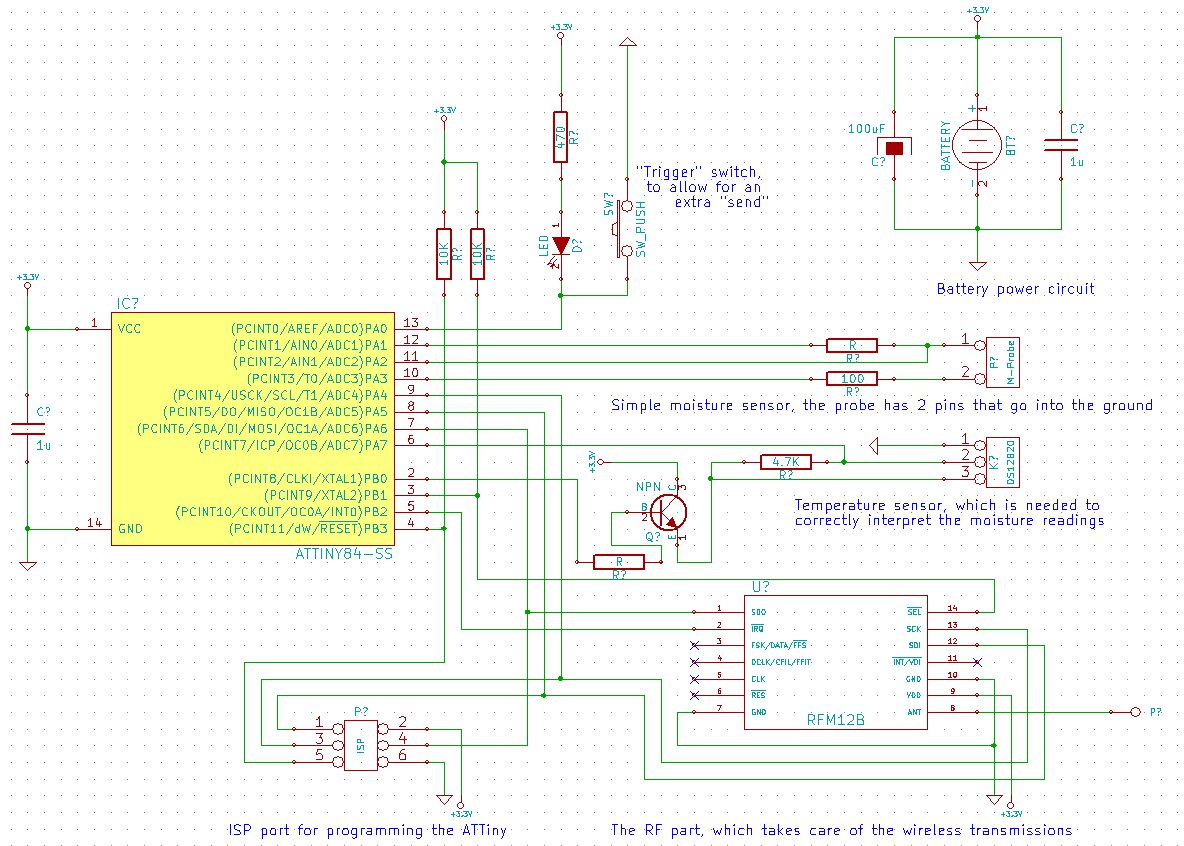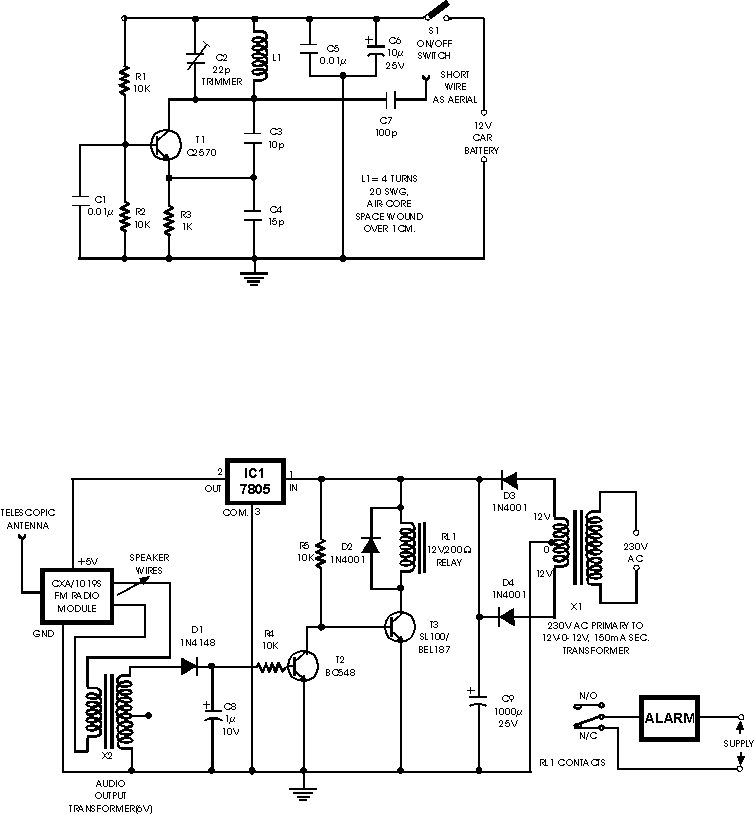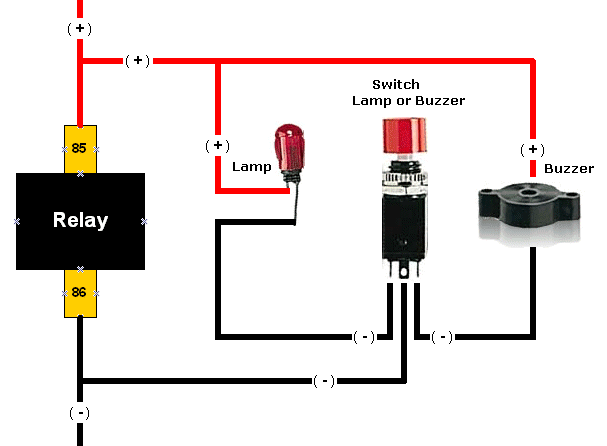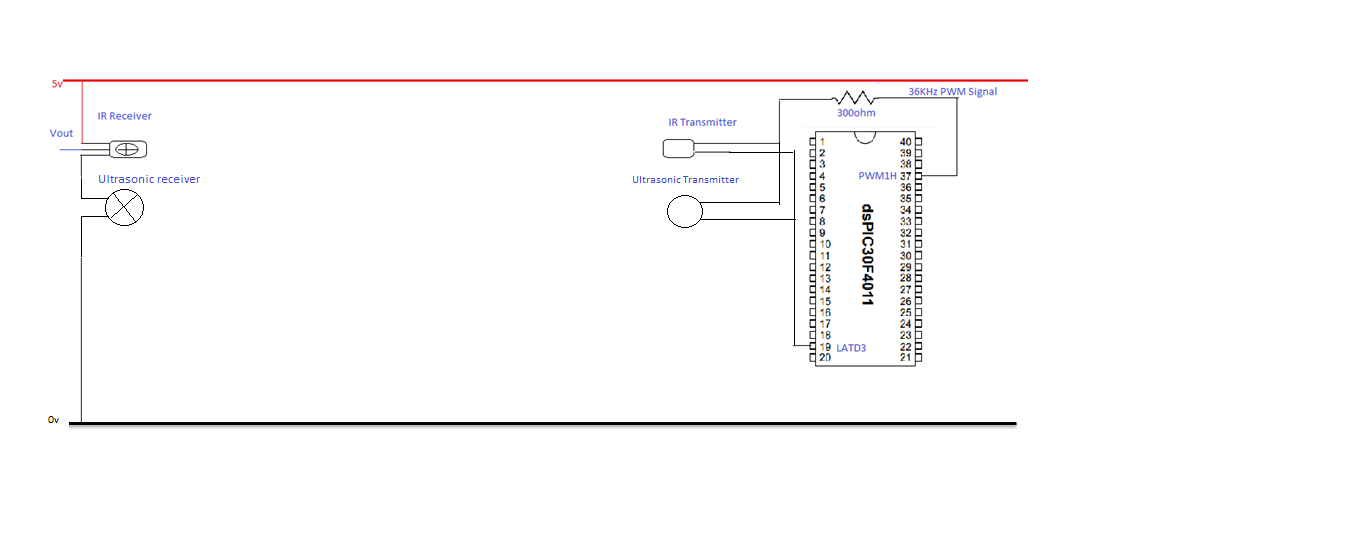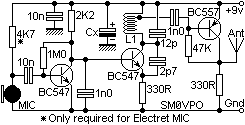
A wireless color-changing decoration project
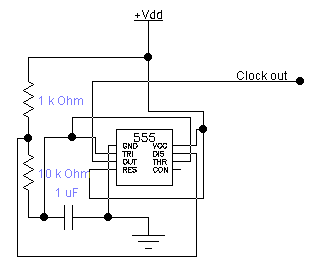
The circuit is based on a 555 timer configured as an astable multivibrator, which generates pulses for the shift registers. It operates at approximately one kilohertz. The Reset pin (Pin 4) must be held high for normal operation. A diode is included for in-circuit programming. The crystal depicted is a 4 MHz ceramic resonator, with its center terminal grounded. A resistor allows the shift register to loop information internally, while the PIC's pin can interrupt this loop to overwrite the information when necessary. After the PIC's pin returns to a high-impedance state, new information can be cycled. This setup is repeated for each color channel. Resistor values are selected to allow around 30 mA through each LED, ensuring similar brightness levels. Resistor values include 220 ohms for red and 100 ohms for green and blue. The circuit includes a standard DB9 female connector, viewed from the solder side, which connects the Request To Send and Clear To Send pins, as well as the Data Terminal Ready and Data Set Ready pins. A resistor protects the TX433's input from high RS232 voltage, while a diode prevents reverse voltage. The TX433 is powered by the Data Terminal Ready pin, which provides sufficient current. Additionally, a six-pin in-circuit programming connector is included to facilitate reprogramming of the PIC without removing it from its socket, connecting specific pins on the PIC to matching pins on an IC socket via a ribbon cable.
The described circuit utilizes a 555 timer in an astable configuration to generate a continuous square wave output, which serves as the clock signal for the shift registers. The frequency of operation is set to approximately 1 kHz, determined by the values of the timing resistors and capacitor connected to the 555 timer. The Reset pin (Pin 4) must be maintained in a high state to ensure proper functionality of the timer, preventing any unintended resets during operation.
The inclusion of a diode for in-circuit programming allows for flexibility in updating the firmware on the microcontroller without the need to physically remove it from the circuit board. This design choice minimizes the risk of damaging the microcontroller's pins during handling. The 4 MHz ceramic resonator provides a stable clock signal necessary for the microcontroller's operation, with its ground connection ensuring proper function.
The shift register's internal looping mechanism is facilitated by a resistor that allows data retention. The microcontroller's pin can override this loop when needed, enabling dynamic changes to the output data. The transition back to a high-impedance state allows for the new data to be processed without interference.
For the LED outputs, resistor values are critical in managing current flow to ensure consistent brightness across different colors. The choice of 220 ohms for red LEDs and 100 ohms for green and blue LEDs is based on the forward voltage characteristics of each LED type, achieving a target current of approximately 30 mA.
The DB9 connector serves as a robust interface for serial communication, with the Request To Send and Clear To Send pins tied together to ensure proper data flow control. The Data Terminal Ready and Data Set Ready pins are also interconnected, facilitating communication between devices. A protective resistor is employed to safeguard the TX433 module from the higher voltage levels typical of RS232 signals, while a diode protects against potential reverse voltage conditions.
The circuit also features a six-pin connector dedicated to in-circuit programming. This connector simplifies the reprogramming process by allowing access to the microcontroller's programming pins without the need for removal, thus enhancing the overall reliability and maintenance of the device. The ribbon cable connection provides a convenient method for interfacing with programming tools.So you`re either revved up about building one of these for yourself or you`re just reading on because you`ve nothing better to do. I can understand that. So let`s begin with a set of schematics: Don`t be confused by this - it`s your basic 555 timer configured as an astable multivibrator.
Its sole job is to provide pulses for the shift registers. T hese part values make the thing oscillate at around a kilohertz. Also fairly straightforward. Pin 4 is the Reset pin which should be held high for normal operation. The diode is to support in-circuit programming. Note that the crystal shown is actually a 4 MHz ceramic resonator with its center terminal tied to ground. The resistor allows the shift register to loop its information within itself, so long as the PIC`s pin does not decide to interfere.
When it does, however, the PIC`s pin is able to deliver enough current to `defeat` the looping information, thus overwriting it. Returning to a high-impedance state allows the new information to cycle some more. This circuit is repeated for each color. The value of the resistors are chosen to put about 30 mA through each LED, and adjusted to create approximately the same light output for full brightness.
For red I chose 220 ohms, and for green and blue 100 ohms. Again, this circuit appears once per color. This is your standard DB9 female connector, viewed from the solder side. This setup ties together the Request To Send and Clear To Send pins, and the Data Terminal Ready and Data Set Ready pins. The resistor is to protect the TX433`s input from the harsh RS232 voltage. The diode makes sure the TX433 never receives reverse voltage. The TX433 is powered by the Data Terminal Ready pin which provides ample current (even from my laptop).
You may have noticed that there is a six-pin connector on my circuit board - this is the in-circuit programming connector. I put it in so I wouldn`t have to remove the PIC from its socket every time I needed to reprogram it (which would have been a recipe for bent pins galore).
The hookup of the programming connector basically connects certain pins on the PIC to the same pins on a matching IC socket at the end of a sufficiently long ribbon cable. Just in case you`d like to build one of these, here is the hookup table: 🔗 External reference
The described circuit utilizes a 555 timer in an astable configuration to generate a continuous square wave output, which serves as the clock signal for the shift registers. The frequency of operation is set to approximately 1 kHz, determined by the values of the timing resistors and capacitor connected to the 555 timer. The Reset pin (Pin 4) must be maintained in a high state to ensure proper functionality of the timer, preventing any unintended resets during operation.
The inclusion of a diode for in-circuit programming allows for flexibility in updating the firmware on the microcontroller without the need to physically remove it from the circuit board. This design choice minimizes the risk of damaging the microcontroller's pins during handling. The 4 MHz ceramic resonator provides a stable clock signal necessary for the microcontroller's operation, with its ground connection ensuring proper function.
The shift register's internal looping mechanism is facilitated by a resistor that allows data retention. The microcontroller's pin can override this loop when needed, enabling dynamic changes to the output data. The transition back to a high-impedance state allows for the new data to be processed without interference.
For the LED outputs, resistor values are critical in managing current flow to ensure consistent brightness across different colors. The choice of 220 ohms for red LEDs and 100 ohms for green and blue LEDs is based on the forward voltage characteristics of each LED type, achieving a target current of approximately 30 mA.
The DB9 connector serves as a robust interface for serial communication, with the Request To Send and Clear To Send pins tied together to ensure proper data flow control. The Data Terminal Ready and Data Set Ready pins are also interconnected, facilitating communication between devices. A protective resistor is employed to safeguard the TX433 module from the higher voltage levels typical of RS232 signals, while a diode protects against potential reverse voltage conditions.
The circuit also features a six-pin connector dedicated to in-circuit programming. This connector simplifies the reprogramming process by allowing access to the microcontroller's programming pins without the need for removal, thus enhancing the overall reliability and maintenance of the device. The ribbon cable connection provides a convenient method for interfacing with programming tools.So you`re either revved up about building one of these for yourself or you`re just reading on because you`ve nothing better to do. I can understand that. So let`s begin with a set of schematics: Don`t be confused by this - it`s your basic 555 timer configured as an astable multivibrator.
Its sole job is to provide pulses for the shift registers. T hese part values make the thing oscillate at around a kilohertz. Also fairly straightforward. Pin 4 is the Reset pin which should be held high for normal operation. The diode is to support in-circuit programming. Note that the crystal shown is actually a 4 MHz ceramic resonator with its center terminal tied to ground. The resistor allows the shift register to loop its information within itself, so long as the PIC`s pin does not decide to interfere.
When it does, however, the PIC`s pin is able to deliver enough current to `defeat` the looping information, thus overwriting it. Returning to a high-impedance state allows the new information to cycle some more. This circuit is repeated for each color. The value of the resistors are chosen to put about 30 mA through each LED, and adjusted to create approximately the same light output for full brightness.
For red I chose 220 ohms, and for green and blue 100 ohms. Again, this circuit appears once per color. This is your standard DB9 female connector, viewed from the solder side. This setup ties together the Request To Send and Clear To Send pins, and the Data Terminal Ready and Data Set Ready pins. The resistor is to protect the TX433`s input from the harsh RS232 voltage. The diode makes sure the TX433 never receives reverse voltage. The TX433 is powered by the Data Terminal Ready pin which provides ample current (even from my laptop).
You may have noticed that there is a six-pin connector on my circuit board - this is the in-circuit programming connector. I put it in so I wouldn`t have to remove the PIC from its socket every time I needed to reprogram it (which would have been a recipe for bent pins galore).
The hookup of the programming connector basically connects certain pins on the PIC to the same pins on a matching IC socket at the end of a sufficiently long ribbon cable. Just in case you`d like to build one of these, here is the hookup table: 🔗 External reference
